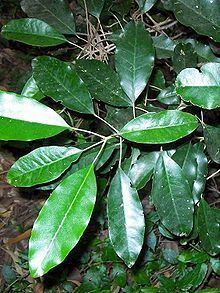Rank Species | ||
 | ||
Scientific name Sarcomelicope simplicifolia Similar Acronychia oblongifolia, Melicope micrococca, Notelaea longifolia, Guioa semiglauca, Acronychia | ||
Sarcomelicope simplicifolia is an Australian rainforest plant in the citrus family. The natural range is from Brogo in south eastern New South Wales to the Mount Carbine area in tropical Queensland. It also grows on Lord Howe Island.
Contents
Thomas Gordon Hartley described it as Sarcomelicope simplicifolia subsp. simplicifolia. The habitat is tropical, sub-tropical, dry and littoral rainforests on the east coast of Australia. Common names are seldom used, but yellowwood, big yellowwood or yellow aspen are recorded in references.
Description
A shrub or small to medium-sized tree growing to 18 metres tall and a diameter of 33 cm. A cylindrical trunk with corky and fissured bark with scales. Mostly grey in colour. Small branches are smooth and grey with some raised dots.
Leaves are noticeable by the long and pale leaf stems, up to 4 cm in length. Leaves opposite on the stem, without serrations. Elliptical in shape, 5 to 13 cm long. 2 to 7 cm wide. Shiny dark green above, paler below. Leaf veins visible on the top and bottom of the leaf.
Flowers and fruit
Flowers appear from March to September. They are creamy in colour, small, forming from forks of the leaves. Four petalled, petals 6 mm long. With eight stamens. The fruit is a drupe, not particularly fleshy, and relatively hard. Yellow or brownish on the fleshy edges. The fruit is eaten by a variety of birds, including green catbird and white headed pigeon. Regeneration from seed is not easily achieved. Seeds should be removed from the flesh, then soaked for a week or two. After six months, around half of these may send out roots and shoots.
